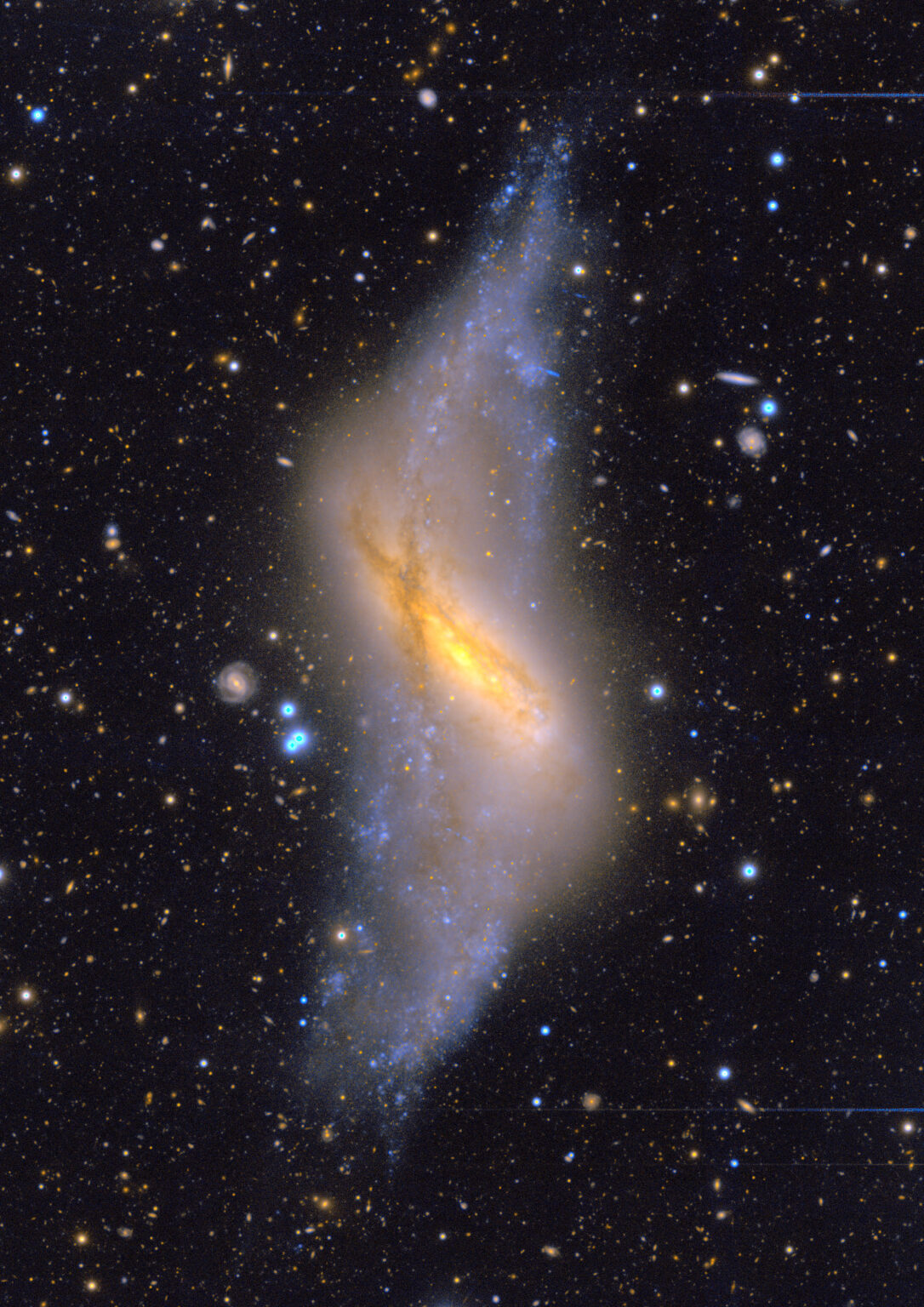Astronomers working with the Subaru telescope have published an image that shows a very unusual galaxy NGC 660. It is unique by having a polar ring.

NGC 660 is located 45 million light-years away from Earth toward the constellation Pisces. The main “attraction” of the galaxy is an extended ring structure surrounding its disk at an almost right angle. Its diameter is 50,000 light-years, which is larger than the diameter of the galaxy itself.
The ring, surrounding NGC 660, also contains significantly more gas than the galactic disk. This is clearly demonstrated by its blue color, the source of which is the many regions of active star formation. The Polar Ring contains many red and blue supergiant stars. The youngest stars are only a few million years old. Dark bands in the ring and galactic disk overlap, additionally emphasizing the complex structure of NGC 660.
According to astronomers, NGC 660 got a ring about a billion years ago when it collided with another galaxy and captured its matter. Over time, this matter was able to “string together” and form a rotating ring.
In late 2012, NGC 660 produced a huge flare about ten times the size of a supernova explosion. Its exact cause is still unknown, but astronomers believe it may be related to the huge jet produced by the central supermassive black hole.
Earlier we reported on how Subaru photographed the galaxy NGC 521.
Provided by subarutelescope.org


